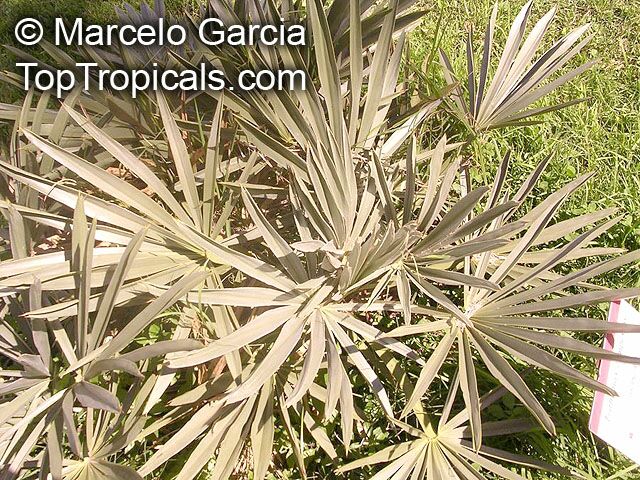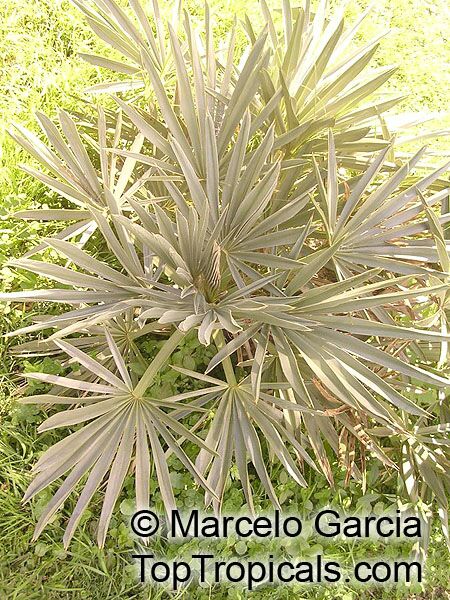Pictogram Guide · Mouse over pictogram for definition
Trithrinax campestris
Blue Needle Palm, Campestre PalmFamily: Arecaceae / Palmae
Origin: South America








Trithrinax campestris, also known as the Blue Needle Palm, is a small tree native to South America. It grows up to 10-20 feet in height and enjoys full sun and moderate water. With its ornamental foliage and palm appearance, this plant adds a touch of exotic style to any environment. Its unique defensive feature is its spines, which can be up to 8 inches long! They are not only a feature but they also serve as a defense system for the palm in its original habitat.
The leaves of this palm stand out for their bright blue color and incredible stiffness, unlike any other palm leaves you've seen.
When it comes to growing Trithrinax campestris, the Blue Needle Palm is best suited to USDA zones 8-10. Due to its hardy nature, this plant can withstand temperatures as low as 30 degrees Fahrenheit for a short time and sustain itself in a range of climates, from desert heat to freezing cold. If you live in a colder region, you can still grow it in a pot. To ensure proper growing, choose a pot that's big enough to accommodate the plant's mature size, and include a drainage hole in the bottom. Additionally, add a layer of gravel in the bottom of the pot and position the pot in a location where it can receive plenty of sunlight. Water your plant moderately, and make sure to use a high-quality, well-draining soil. Lastly, move the pot to a sheltered spot or indoors during winter to ensure that the cold does not damage the palm.


